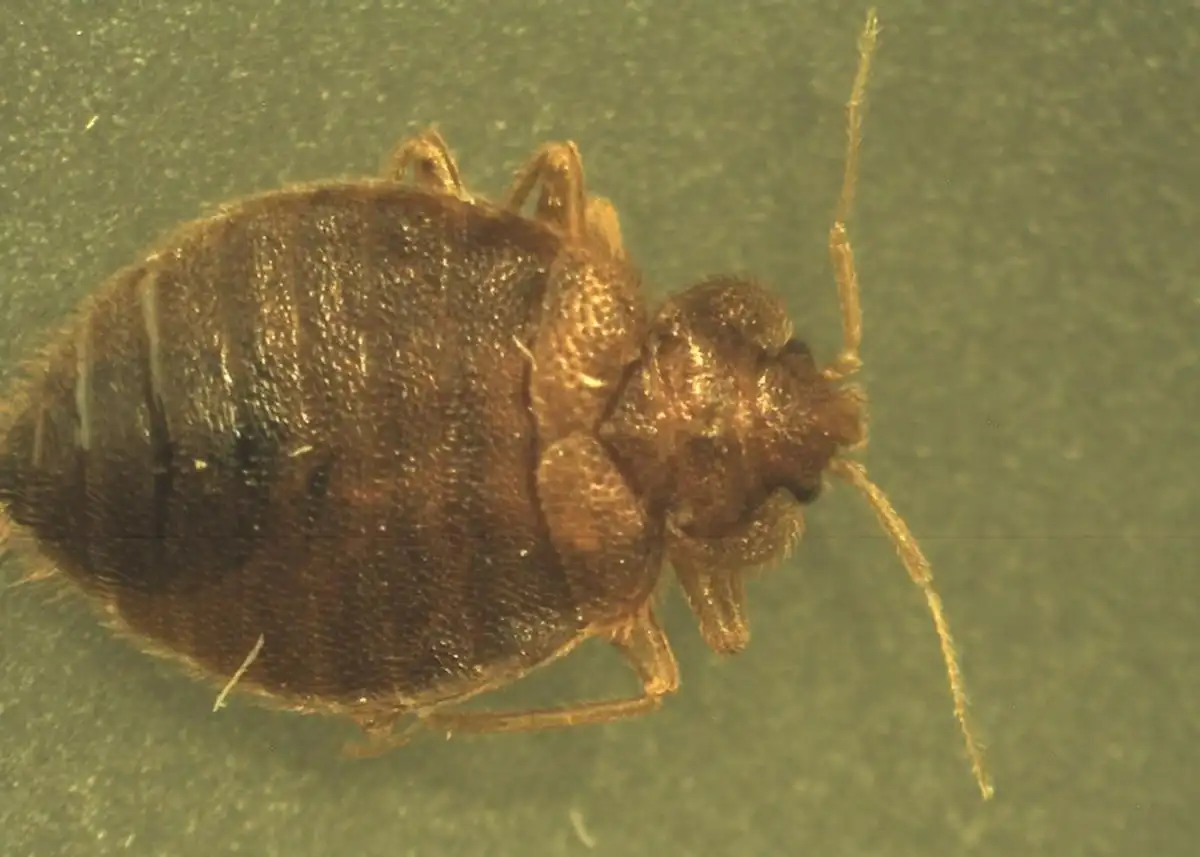While it may not matter to you which type of bed bugs have infested your home, bed bug exterminators usually want to know about the specific species before ensuing extermination measures.
So, how many types of bed bugs are there?
Well depending on the intent of the asker of such a question there are 3 or 5 types if bed bugs that can be found in your home.
The 3 types (Cimex lectularius, Cimex hemipterus, und Leptocimex boueti) are what we consider the usual household bed bugs, while the other two namely the bat bug and swallow bugs are not natural household bugs but they may infest the home just as the common bed bugs do.
Page Contents
Household Bed Bugs
Household bed bugs are reddish-brown, oval-shaped, flattened insects that feed on the blood of humans while shedding their skin between molts. They are typically active at night.
There are three types of household bed bugs namely the common bed bug, the tropical bed bug, and the West African bed bug.
1. Common Bed Bugs (C. Lectularius)
Cimex lectularius (common bed bug) is distributed worldwide, in nearly every place that humans have inhabited. Historically, bed bugs were a specific scourge of the impoverished, occurring often in mass shelters.
However, throughout the early stages of the contemporary resurgence, it was the tourist regions and destinations that suffered.
Today the common bed bugs have spread to a wide variety of settings, including hospitals and hotels, as well as trains, cruise ships, and even airplanes.
The common bed bugs are most frequently transported as stowaways in baggage, but they can also be carried via furnishings and other personal things, as well as by spreading to neighboring houses.
Owing to the lack of statutory reporting requirements, accurate numbers on the prevalence of bed bugs are unclear, and many infestations go unreported due to the shame generally associated with them.
2. Tropical Bed Bugs (C. hemipterus)
Cimex hemipterus (tropical bed bug) is a bedbug species that lives predominantly in tropical regions and belongs to the cimicidae family.
However, this species, like the closely related bed bug species, has been known to exist in more temperate areas.
The tropical bed bug is a human hematophagous obligate parasite. This implies that it must feed on the blood of its human hosts in order to thrive.
When people are bitten, they feel itching, wheal, and skin sores surrounding the bite regions. This species lives in human homes, usually in cracks, crevices, or beds, and is more common in poorer nations.
The tropical bed bug, like other bed bugs, prefers to be active at night.
3. West-African Bed Bugs (L. boueti)
Leptocimex boueti is commonly found in West African nations. They have been found to inhabit most households in the regions and little is known why they seem not to spread to other parts of the world.
However, they have also been found in some South American nations. This means you are less likely to be bitten by this species unless you travel to the regions where it is found.
This species has also been found in bats and may double as both a household and bat bug.
Bat Bugs (C. adjunctus)
Bat bugs (scientifically known as Cimex adjunctus) have tiny oval body shape with flat surfaces that allow them to readily hide in cracks and crevices.
These insects are translucent tan or beige in appearance, but following a blood meal, they turn dark brown. Their beak-like mouthparts are designed for sucking and piercing.
The Big Brown Bats are the most common hosts for these insects. The C. adjunctus will attach to the fur of the bat and return to the roost.
They tend to hide in crevices near where bats sleep as they wait for the opportune feeding time.
While they do not primarily target humans, they have been known to bite humans just as the common bed bugs do.
Swallow Bugs (O. vicarius)
Swallow bugs (Oeciacus vicarius), as the name suggests, are commonly found in birds, specifically the cliff and barn swallows. They tend to hide in crevices around and near swallow nests, and such their blood when they sleep.
Unlike common and tropical bed bugs that are active throughout the year in houses, swallow bugs manifest dormancy when swallows are not around to nest.
Swallow bugs emerge in late winter/early spring, expecting their hos. During this period, humans may be bitten or infested by swallow bugs looking for a meal.
Swallow bug infestations in households can arise when nests are abandoned. However, they usually go dormant until the birds return in the spring.
Swallow bugs resemble bed bugs until studied under a microscope, where variations in hair length and antennae segment length may be seen.
Adult swallow bugs are about 3/16 inches long and reddish-brown in appearance. The size and color of swallow bug nymphs depend on when last they had their blood meal.
Referenzen:
READ MORE: Can bed bugs lay eggs in your hair?
Bildnachweis: Whitney Cranshaw, Colorado State University, bugwood.org | leichte Bearbeitungen wurden vorgenommen | lizenziert unter a Creative Commons Namensnennung 3.0 Lizenz.
- Wo kann ich Bettwanzenbomben kaufen? - 30. Januar 2023
- Wo kann ich ein Mittel zur Bekämpfung von Bettwanzen kaufen? - 30. Januar 2023
- Wo kann ich Bettwanzenspray kaufen? - 30. Januar 2023
